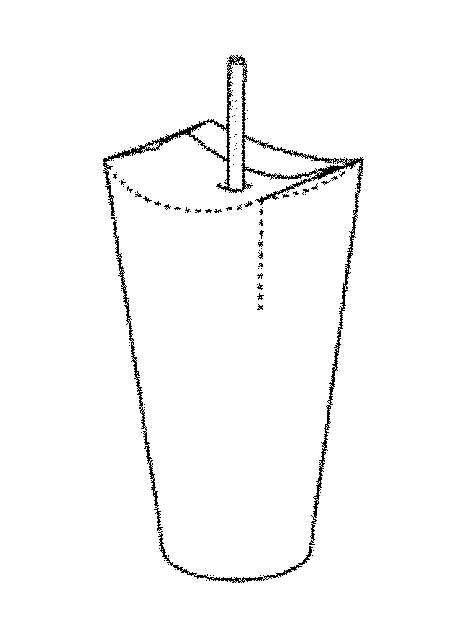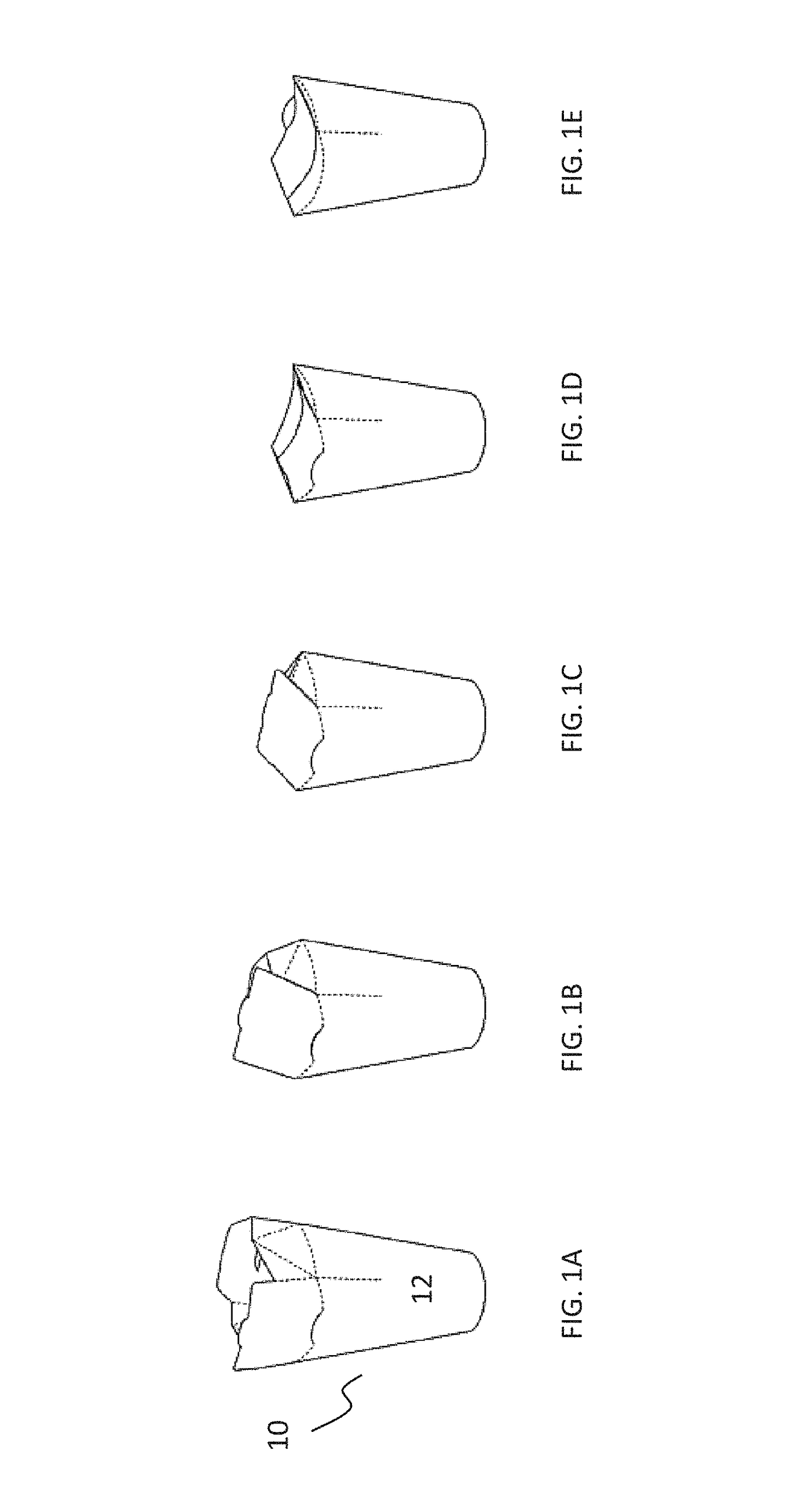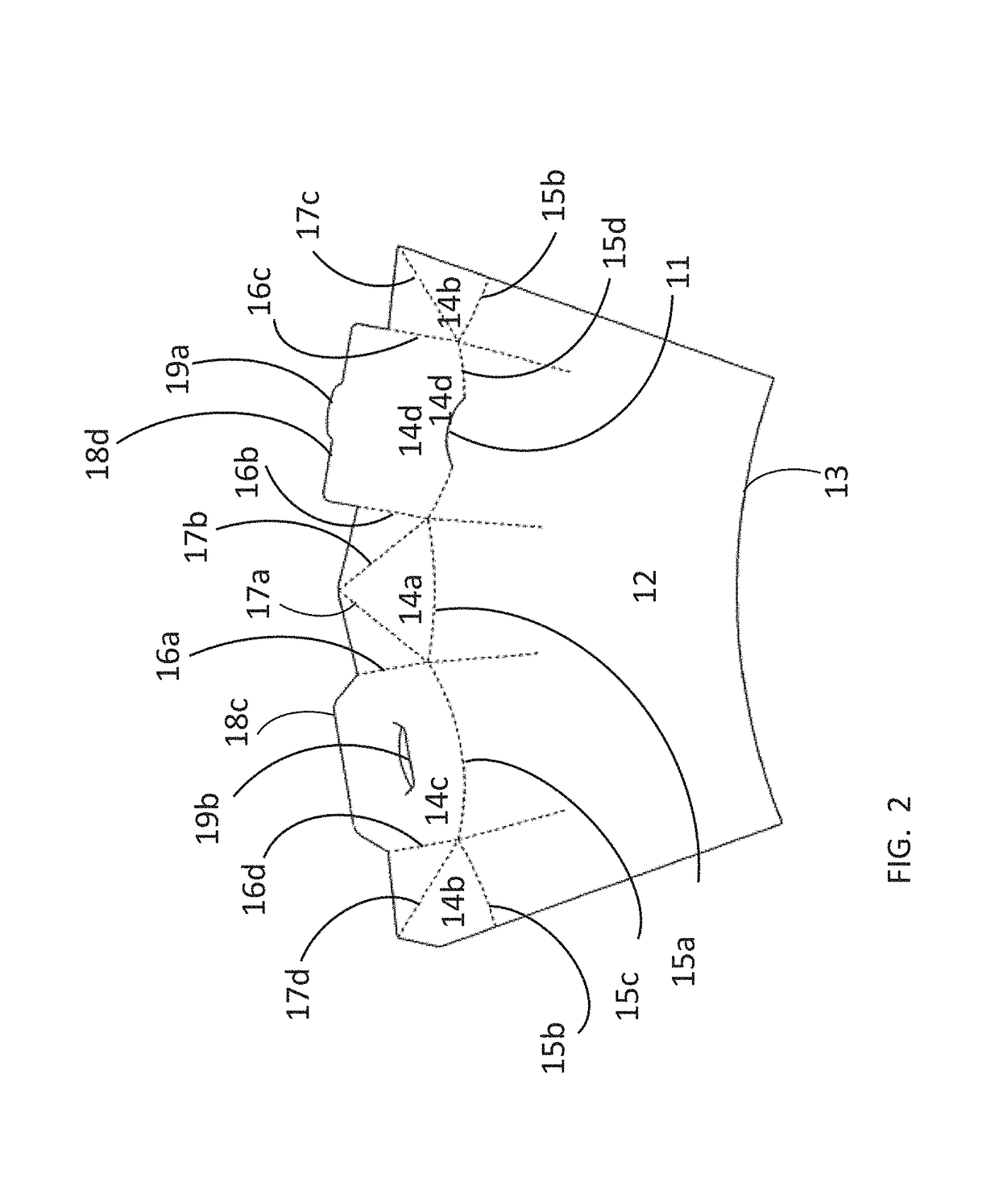Paper cup, a blank for a paper cup, and use of a paper cup
a paper cup and blank technology, applied in the field of paper cups, can solve the problems of plastic lids, recyclable separately, and additional difficulty in the practical use of plastic lids
- Summary
- Abstract
- Description
- Claims
- Application Information
AI Technical Summary
Benefits of technology
Problems solved by technology
Method used
Image
Examples
Embodiment Construction
Definitions
[0024]In the present context, the term “paper cup” comprises cups and other corresponding receptacles with an approximately circular or rectangular base and made of coated or uncoated paper or paperboard, which cups are aimed at holding liquid or food for human or animal consumption.
[0025]The present invention provides an improved lid mechanism for a paper cup. The paper cup comprises a sidewall folded to an approximately tubular or hollow shape, and a base. The lower edge of the sidewall is attached to the base. The lid is based on four closure panels integrated or attached to an upper edge of the sidewall. The closure panels can be folded inwards and locked in place in a liquid-tight manner.
[0026]The panels can be formed as flaps that are separately attached to the sidewall of the cup. However, in a preferred embodiment, the panels are formed as extensions of the sidewall so that the panels are attached to each other from their sides at least partly, to form a continuou...
PUM
 Login to View More
Login to View More Abstract
Description
Claims
Application Information
 Login to View More
Login to View More - R&D
- Intellectual Property
- Life Sciences
- Materials
- Tech Scout
- Unparalleled Data Quality
- Higher Quality Content
- 60% Fewer Hallucinations
Browse by: Latest US Patents, China's latest patents, Technical Efficacy Thesaurus, Application Domain, Technology Topic, Popular Technical Reports.
© 2025 PatSnap. All rights reserved.Legal|Privacy policy|Modern Slavery Act Transparency Statement|Sitemap|About US| Contact US: help@patsnap.com



